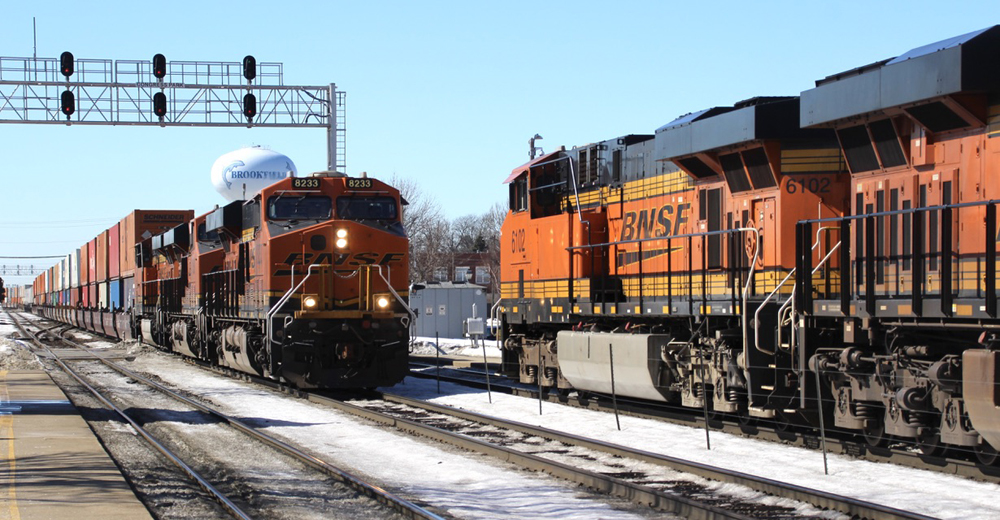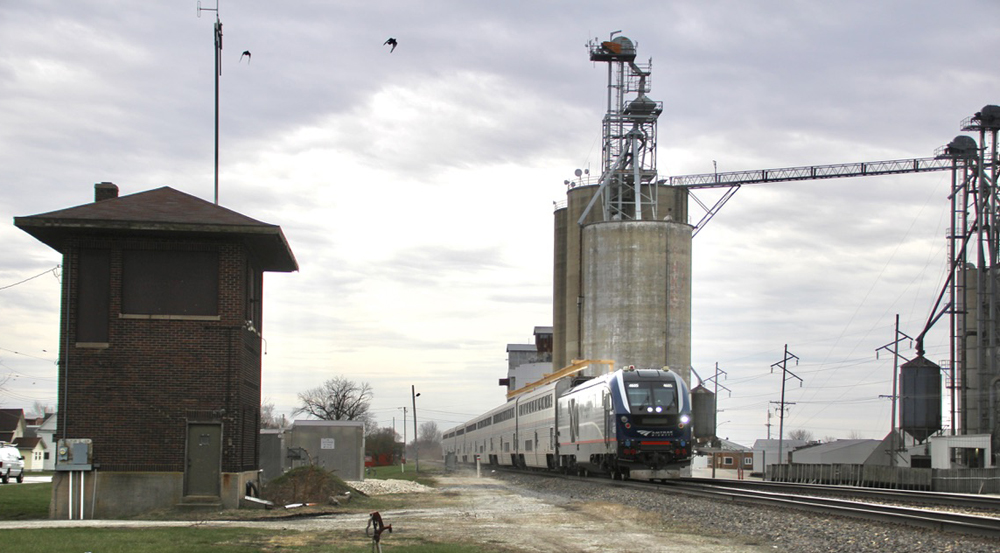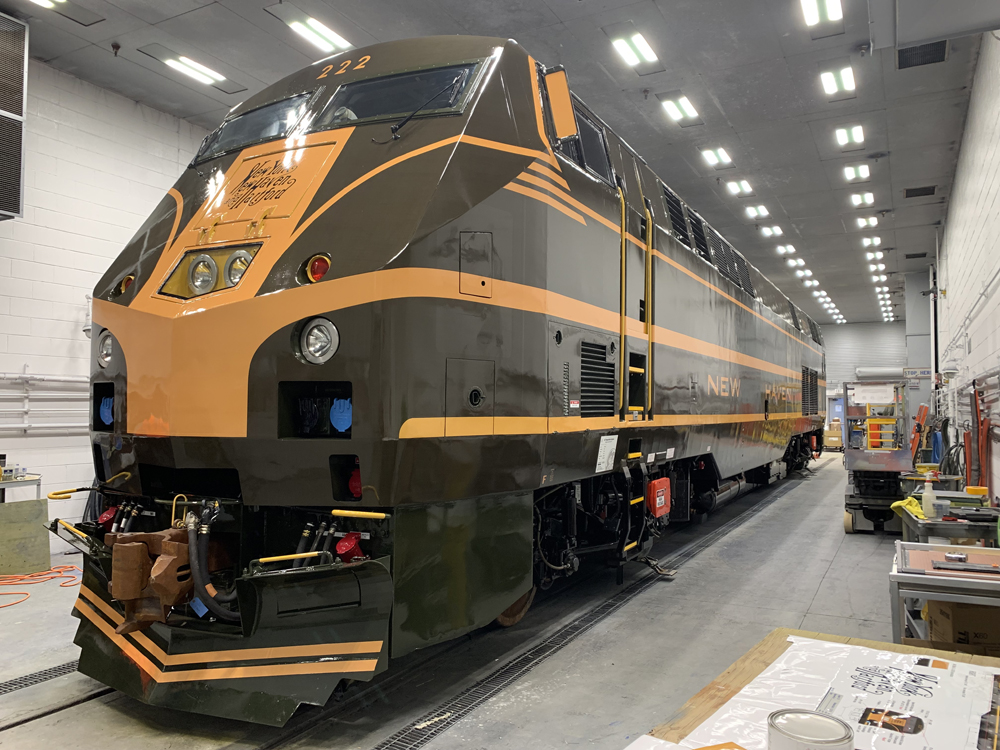
WASHINGTON — A report released today (Thursday, Sept. 8) by the railroads’ trade group, the Association of American Railroads, says a nationwide interruption of rail service could cost more than $2 billion per day.
The AAR says the report is based on historical Federal Railroad Administration data — specifically updating a 1992 study to quantify the impact of a national rail shutdown on employment and economic output in today’s dollars. It also outlines what it says the impact would be on manufacturers, distributors, retailers and consumers.
The AAR report comes as railroads and unions continue to move closer to a possible strike or lockout. A 30-day cooling-off period for negotiation — triggered by the release of recommendations from a Presidential Emergency Board — ends at 12:01 a.m. EDT on Sept. 16.
In other developments regarding the ongoing negotiations, the trade group for the fertilizer industry has asked Congress to intervene in the event of a strike, while one union reported to its members that BNSF Railway “was hampering progress between the parties“ on Wednesday, during the first of three days of negotiations scheduled at the National Mediation Board in Washington. Negotiations were also held Thursday and were slated to continue on Friday.
The Presidential Emergency Board’s recommendations include pay increases totaling 22% (24% compounded) over a five-year agreement. Five of the 12 unions involved in the negotiations over a new national contract have reached tentative agreements based on the PEB recommendations — though none have yet been ratified. Negotiations were held Thursday and are slated to be held again Friday at the National Mediation Board in Washington.
But unions representing operating crews —the Brotherhood of Locomotive Engineers and Trainmen and the International Association of Sheet Metal, Air, Rail, and Transportation Workers-Transporation Division (SMART-TD) have indicated they have deep concerns over work rules working conditions as well as pay. In a Labor Day statement, the heads of those unions said that because of those rules, “BLET and SMART-TD members are situated differently at this stage of the negotiations than the members of most other rail unions“ [see “News report: Labor secretary joins rail negotiation session …,” Trains News Wire, Sept. 8, 2022].
AAR report details economic impacts
A statement from AAR CEO Ian Jefferies accompanying Thursday’s report emphasized the pay increases being offered to workers and called on Congress to impose the PEB recommendations in the event of a work stoppage, “rewarding employees and stopping unnecessary economic harm and uncertainty for rail customers.”
The report says about 467,000 additional long-haul trucks would be needed each day to replace the more than 75,000 carloads and intermodal units — containers or trailers — that begin a trip by rail on an average day. This excess capacity does not exist: the American Trucking Association says there is already a shortage of about 80,000
The FRA’s 1992 report concluded that a two-week national rail work stoppage would result in 570,000 layoffs in rail-served industries and $1 billion per day in lost output. The AAR report estimates the financial cost today could be double but offers no figure on possible job losses. It also outlines potential impacts on commodities ranging from food to automobiles, as well the potential loss of electrical generating capacity resulting from a lack of coal.
The report also says “a freight railroad shutdown would devastate Amtrak operations just as ridership is starting to return,” and that it would “disrupt commuter rail service across the country.”
In the last national rail shutdown — a 1992 strike against CSX by electricians that turned into a national lockout, ended by Congress after two days — national Amtrak operations were indeed disrupted, although operations on Amtrak’s own Northeast Corridor continued. But many commuter rail operations also were able to continue, even those involving operation on freight railroads, by prior arrangement [see “The (In)visible Trains,“ Trains Magazine, September 1992, Page 6].
Maintenance of Way union singles out BNSF
The Brotherhood of Maintenance of Way Employes Division of the International Brotherhood of Teamsters (BMWED), in a Thursday negotiating update to its members, said that at Wednesday’s negotiations, attended by U.S. Secretary of Labor Marty Walsh, BNSF “refuses to agree to collective bargaining agreement language that is consistent with BMWED’s proposal and the PEB 250’s recommendations, which would ensure BNSF maintenance-of-way employees that drive their personal vehicles to travel to different work locations and worksites would be reimbursed for such.” Other railroads have made such commitments, the union says.
“BNSF President and CEO Katie Farmer needs to bring BNSF in line with the other freight railroads so that we can reach a national agreement,” BMWED President Tony D. Cardwell said in the update. “The reality of maintenance-of-way mobile gang work is that the employees must drive their personal automobiles throughout the work season so that they can meet basic personal needs. Things like securing a hot dinner after a 12-hour workday while on the road. Or grabbing groceries for midweek lunch preparation. Or picking up hygiene or medication necessities from the store. …
“BNSF was party to the lawsuit to compel BMWED to negotiate nationally, and we have a recommendation from PEB 250 that is national. BNSF needs to do the right thing here, just as the other railroads have committed to do.”
Fertilizer group calls on Congress to act
The trade group for the fertilizer industry, the Fertilizer Institute, has released a letter it sent to congressional leaders on Wednesday, asking that Congress “urgently begin preparations“ to enact the Presidential Emergency Board recommendations, while also asking for passage of the Freight Rail Shipping Fair Market Act, which would increase the Surface Transportation Board’s ability to address service issues [see “House bill would expand STB’s authority …,” Trains News Wire, Aug. 2, 2022].
“Over half of all fertilizer moves by rail year-round throughout the United States and the timeliness and reliability of fertilizer shipments is absolutely critical,“ Fertilizer Institute CEO Corey Rosenbusch wrote. “If farmers do not receive fertilizer, it results in lower crop yields, higher food prices, and more inflation for consumers. Fertilizer markets have been experiencing extreme challenges for nearly two years, and this includes poor rail service, which is the worst it has been in decades. A comprehensive approach on rail service and operational efficiencies is needed in the short and long term.“
— Updated at 8:42 p.m. CDT to include information on letter from the Fertilizer Instititute; updated at 7:45 a.m. on Friday, Sept. 9, with information from BMWED update on negotiations.














Because Gerald, not everyone lives in the same town and works at the same changing job site. Remember railroads are linear and go on for miles. Show me the simple math to prove this. Again you have answers on things you don’ know about. Are you a politician by chance?
Why should maintenance-of-way employees be driving their own vehicles to job sites anyways…it would actually be less expensive for the company to provide company vehicles and make them carpool to job sites.
2B$ a day? That’s impossible, labor does not contribute to profits. Or does it?
That’s the entire U.S. economy that would be impacted by $2Billion per day, I think that number is low in my opinion.
That is because the spin the Class 1’s roll out isn’t for Congressional, Shipper or Regulator consumption.
Its for Wall Street’s consumption.
What the Class 1’s are saying with the loudest voice available is that our ratio is going to rise “because the government made us do it” by paying more in compensation and benefits. Messages can be a good thing when they come early and often, but always know who the intended audience is, and its pretty clear in this case who that is.
Being a career railroader with many colleagues in many departments of the railroad I work at and at many terminals ,the most overwhelming complaint of the peb was the lack of addressing reasonable time off without fear of discipline. The railroads will continually tell the general public that so wholeheartedly believes their every word that we rails get plenty of time off and we’re just lazy and lack the will to work long hours. Let me explain. My own family member on the same railroad I work for has just informed me that he’s worked an accumulated 400 8 hour days since January and he’s only taken 18 days off since then total ,and he’s used up over half his points. So he’s worked well over a years of hours and has only been able to take roughly 4 months worth of two days off per month and he’s already half way to being fired. That scenerio plays out thousands of times on all the class one railroads and they all tell us that we don’t work nearly enough. Road crews are on call 24/7 365 that means you will get called on most road jobs every 10 hours and you will sit in hotels for days at a time( which by the way the railroads will not count as time on the job). The class ones will work train crews to the bone and expect more every time or they will fire you. Most of us working have always had an understanding how this job worked and what the railroad expected of us but up until a couple years ago and on one particular class one a few months ago they decided the goal posts weren’t far enough apart and decided to move them. We had a reasonable expectation that 75 % of our time in a month was for the job and we understood that as railroad operating crafts, but when they move the goal posts without any input from the crafts to a more than 90% requirement then we all say the hell with this. That in a nutshell is why we will strike and nothing more, let the company spin doctors(liars) tell the masses otherwise but reasonable time off is it plain and simple.
You do know the average employee only gets 10 days of time off a year, don’t you? That’s time off for vacation, other functions like Dr. are a separate category known as sick leave, and then there’s the 3 days of bereavement for a death of a close family member. That’s in addition to the time that people can take for FMLA, which is guaranteed.
How can someone work 400 8 hour days in less than 8 months…the math doesn’t add up, and he’s taken off 144 hours(might as well keep the math uniform, the entire time…so a total of work plus time off of 544, out of a total time of = 5856 hours, that’s how many hours have gone by this year already. so he’s worked roughly 7% of the hours so far this year. Your 90% is nothing but a lie, and sitting in a hotel not on a train isn’t working…it’s time off of working. Learn to do some simple math, maybe explain it to your union leadership as well as your union compatriots…that took me less than 2 minutes to figure out.
Well the average employee mr McFarland gets every Saturday and Sunday off per week as well don’t they? On call railroaders don’t, not even a second per month. I’m not talking leave days or vacation as you assuredly must be.. You assume we are all idiots and I assure you I know my math, I have a degree and I’m a machinist by trade( yep I used many forms of math to make airplane and missile parts for our government and its defense while I was in college) If you care to read my comments again you’d realize you missed one key word EQUIVALENT, and when you’re sitting on a train well beyond your hours of service at times 18 to 20 hours then you can very easily accumulate many 8 hour equivalent days . SO before you dismiss my math with your own version please read first. There aren’t lies being strewn about just realities by an industry that’s pushed its employees to far and that’s a certainty. Whether there’s a union involved is practically irreverent at this point, no one is willing to work under the conditions that they expect. I have always welcomed individuals like you to experience the average work week or month a railroad engineer or conductor endures before you make opinions on operating craft employees. You know while I was in school the only thing I wanted to do was be an engineer and I followed through with my dream and made it a reality. I’ve always defended my employer and it’s decisions if they were rational, especially to the guys that always cried foul, but what they’re doing now isn’t rational and now it’s my turn as well as many others like me to call foul and they need to hear it.
Gerald,
First, T&E crews can and do work on their rest, and are on call 24/7/365-1/4. You, perhaps, go to work for an 8 to 10 hour day in your 40-hour work week. At the end of that day, you go where? Home to the Mrs. and the kids. After your commute, you go home, have dinner, see the kids, maybe a little knucky-knucky with the Mrs. for your rest. In a standard year, you will work 2,080 hours. Are you with me so far?
A T&E crew can work 12 hours for 10 hours rest and less than 12 for 8 hours rest. Since a T&E crew an work 365-1/4 days, a 12-hour crew can accumulate 4,383 working hours. If you throw in the 2 extra hours per day, the total goes up to 5,113.
Let’s go one step further. A T&E road crew that works only 8 hours can be called back after 8 hours. So say it’s another 8 hours. If this were to occur on a regular basis, a T&E crew could potentially work 730 8-hour periods.
Second, your “rest” begin when you clock out. Your rest includes travel to and from where you are sleeping that period. Also included in that rest is having a meal, showering or possibly talking to the Mrs. Oh, and the crew caller will call you a couple hours before your time out. So, in an 8 to 10 hour “rest,” you might get 5 to 7 hours of sleep, if you can sleep at all.
You go home and get all snuggly with the Mrs. after a nice dinner; maybe a little spooning.
Third, when you are stuck at an away terminal, you are stuck. You cannot go home. To make matters worse, you never know when the caller will call. Should I go back to bed? Can I go get a hair cut? Now let’s suppose your employer makes you go to a motel instead of going home, just in case they might need you. But, they may not. Or, maybe two days from now. So there you are, stuck. But you are not working in your definition, right? What are you doing?
And finally, what job are you talking about that has such poor leave benefits? A union job will have at least two weeks per year for new hires. Been there for a while, that goes up to four weeks per year. Sick leave? Unless you are working for Sam’s relatives or the clown, you typically get a minimum of 5 to 7 sick days. And don’t forget those 11 Federal Holidays! So if we total them up, that’s 28 working days for a T&E crew.